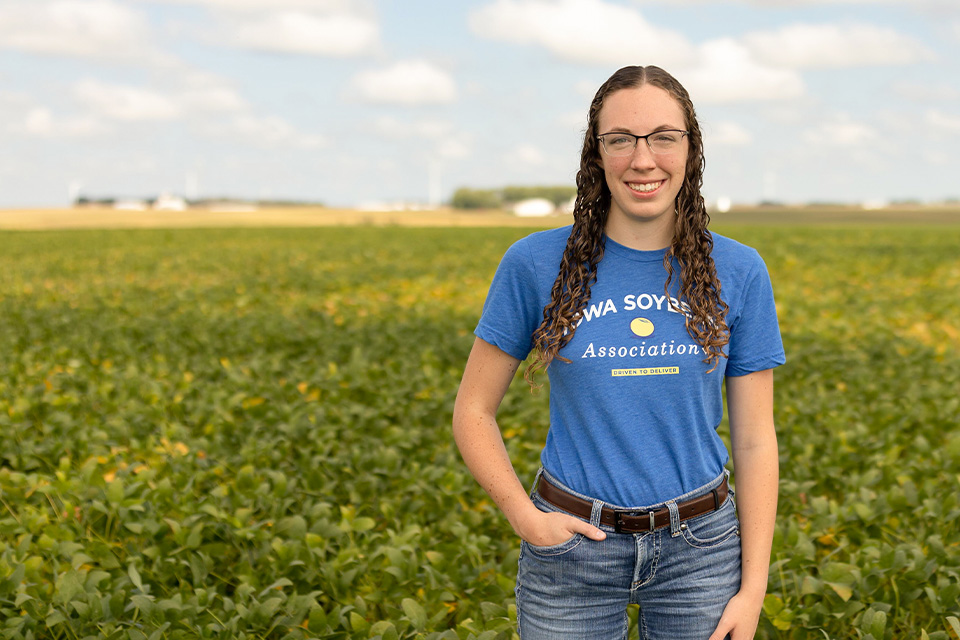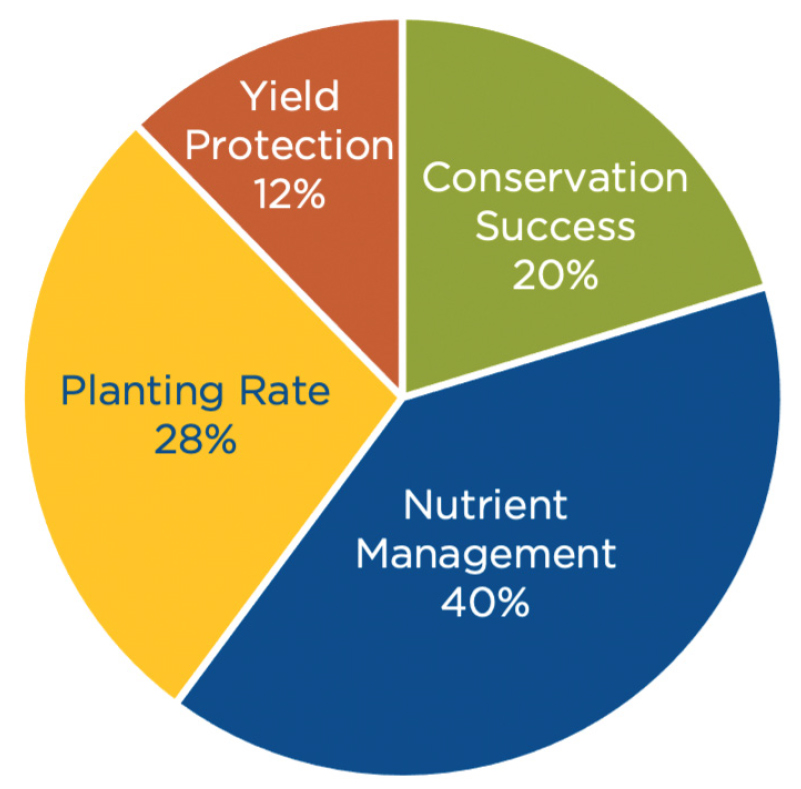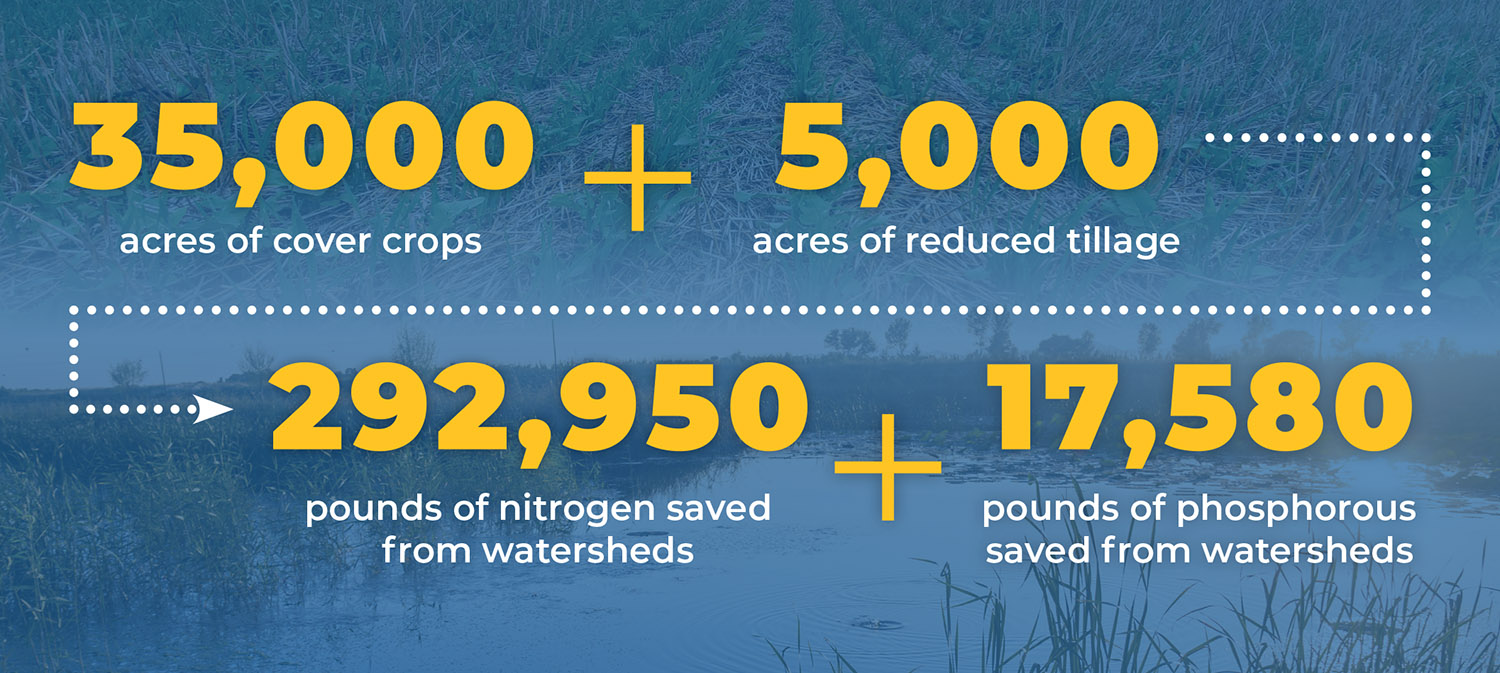
ISA Technical Insights Manager Rosie Roberts (Photo: Iowa Soybean Association / Joclyn Bushman)
Research year in review
January 11, 2024 | Rosie Koch
As we prepare for the new year, we can’t help but reflect on the previous year’s progress and achievements. 2023 welcomed new projects, insights and expertise to Iowa’s 40,000 soybean farmers. Within the Research Center for Farming Innovation, our agronomists, research scientists, conservationists, wildlife biologists, technicians and analysts diligently focus on improving farmer’s productivity, profitability and sustainability. Here’s the highlight reel of 2023.
Guided by farmers’ interests
Our Research Agronomy team conducted 143 on-farm replicated strip trials across the state, spanning from the rolling hills of Fayette County to the plains of Calhoun County and everywhere in between. Our research agronomists and technicians connected 102 farmer cooperators to 15 projects, guided by each participant’s desire to learn about different practices on their farm and provide valuable information to other Iowa farmers. Some of these projects included fungicide’s impact on soybean production, variable rate planting trials and improved nitrogen use efficiency in partnership with Iowa State University.
hills of Fayette County to the plains of Calhoun County and everywhere in between. Our research agronomists and technicians connected 102 farmer cooperators to 15 projects, guided by each participant’s desire to learn about different practices on their farm and provide valuable information to other Iowa farmers. Some of these projects included fungicide’s impact on soybean production, variable rate planting trials and improved nitrogen use efficiency in partnership with Iowa State University.
Translating results into plans
After completing an on-farm trial, the Analytics and Insights team worked diligently to translate each trial result into recommendations and actionable management decisions. The team analyzed more than 143 individual sites, and an analysis of combined trials across the state has also been shared on our website. In 2023, our team rolled out a new tool to interpret and compare soil health test results across variable geographies in Iowa. The Soil Health Interpretation Portal (SHIP) allows farmers and advisors to see how their soil health measurements compare to others in their area and think about how this could impact their operation. The SHIP can be found on our website (iasoybeans.com), alongside many other free decision-making tools. Additionally, this team started and published three episodes of the Pods of Potential podcast, a new avenue to share RCFI projects and research insights.

After gleaning insights from research, our boots-on-the-ground team is ready to assist with practice implementation and in-season support. The Conservation Agronomist Network covers all 99 counties in Iowa, driving the implementation of conservation practices using both in-field and edge-of-field practices. Each conservation agronomist provides agronomic assistance to ensure farmer success, partners with ag retailers and connects stakeholders with cost-share programs that ensure profitability on every acre. In 2023, guidance from conservation agronomists saved 292,950 pounds of nitrogen and 17,580 pounds of phosphorous from watersheds by adopting cover crops on 35,000 acres and reducing tillage on 5,000 acres. These numbers influence a field’s ability to cycle nutrients and improve downstream water quality.
Saving soil
This continued focus on conservation and ecosystem services directly ties into the Conservation Programming Services (CPS) team. Through project development and implementation, CPS is a leader in soil, water and habitat resource management. This includes using ISA’s water lab to analyze 2,696 samples in 2023 for nitrogen, phosphorous and bacterial concentrations collected from 533 sites across the state. The water lab partnered with 119 participants, mostly producers who expressed interest in testing either a tile outlet, stream, lake or edge-of-field conservation practices for water quality metrics. Seasonal reports allow each participant to compare their site’s results to other anonymous sample locations across the state.

Species preservation
The CPS team also focuses on habitat restoration for endangered species native to Iowa. In 2023, 25 oxbow restorations were completed to provide habitat for the Topeka shiner and mitigate flood risk. Additionally, 29 acres of pollinator habitat were seeded in historic areas of the rusty-patched bumblebee. Our specialists also assisted with implementing edge-of-field practices that use natural means to filter out nitrogen from tile drainage water.
How can RCFI’s team of experts help positively impact your farm? Whether you’re considering variable-rate seeding populations or improving habitat along the edge of your fields, we have a trained professional eager to assist across your operation’s landscape.
Back